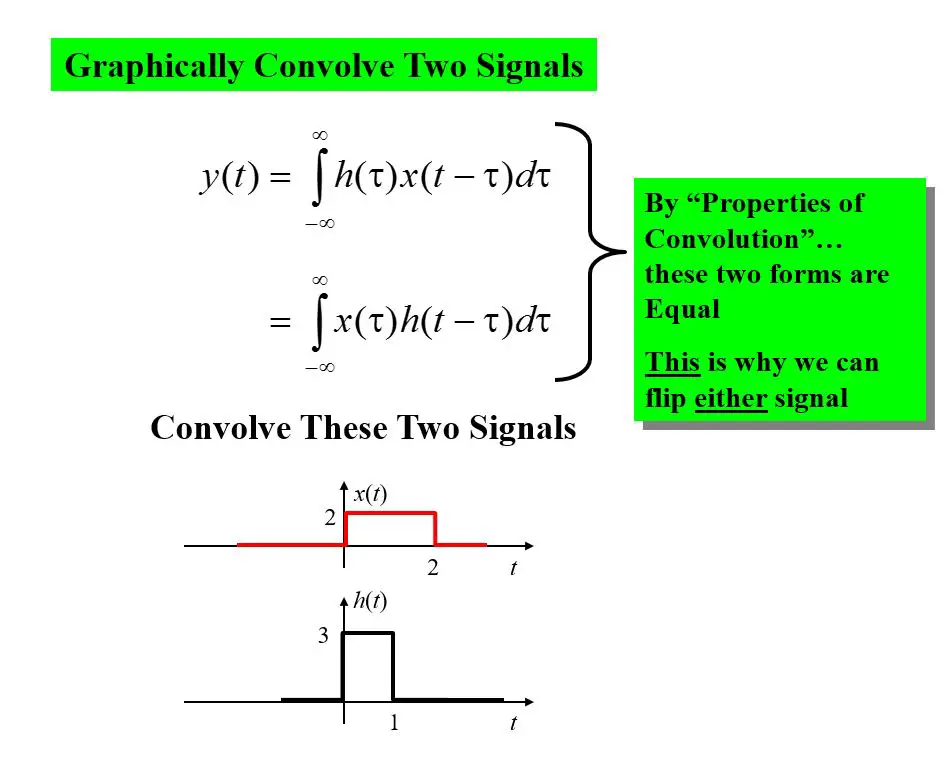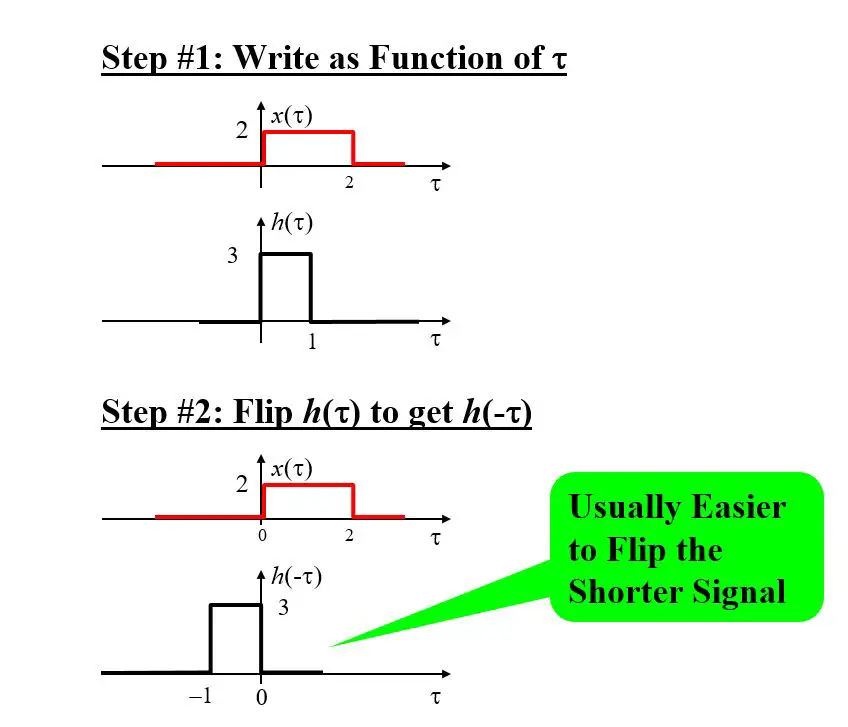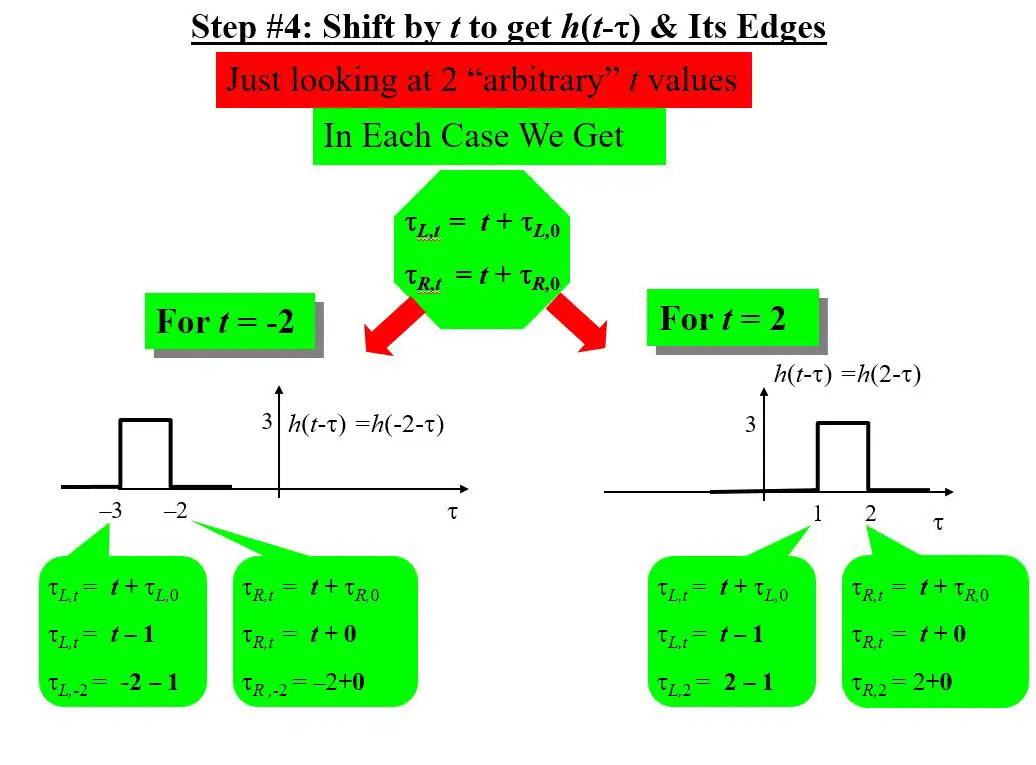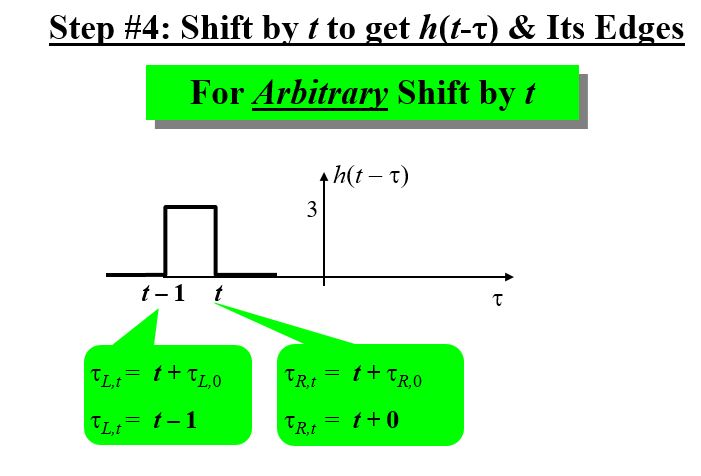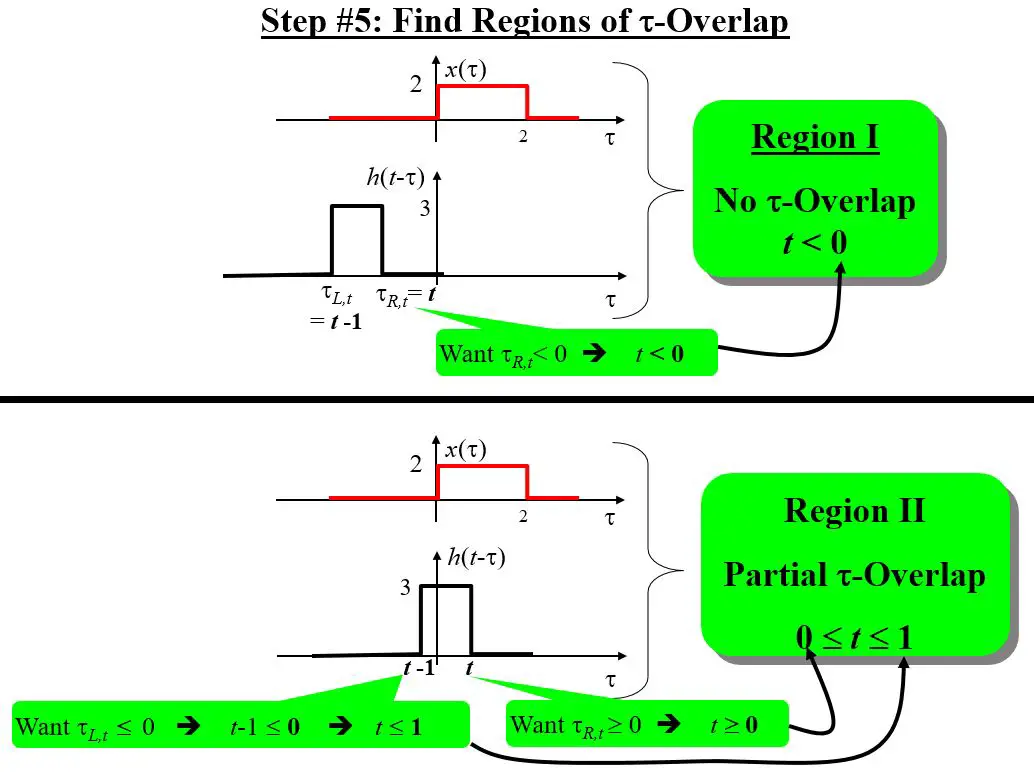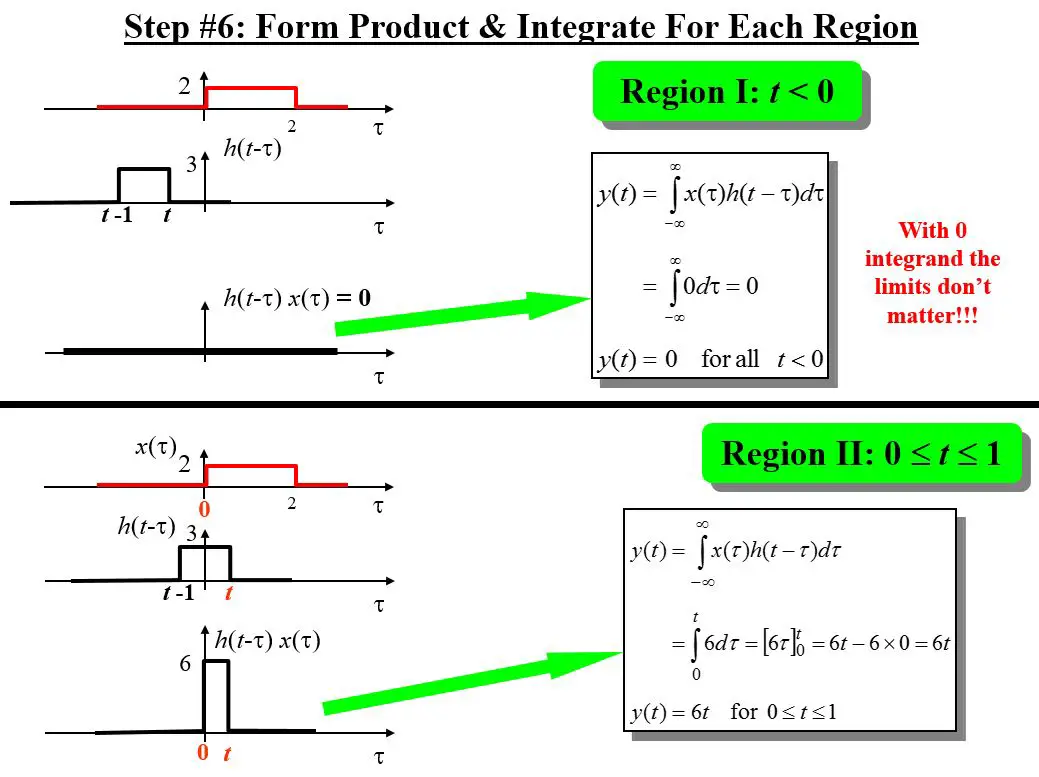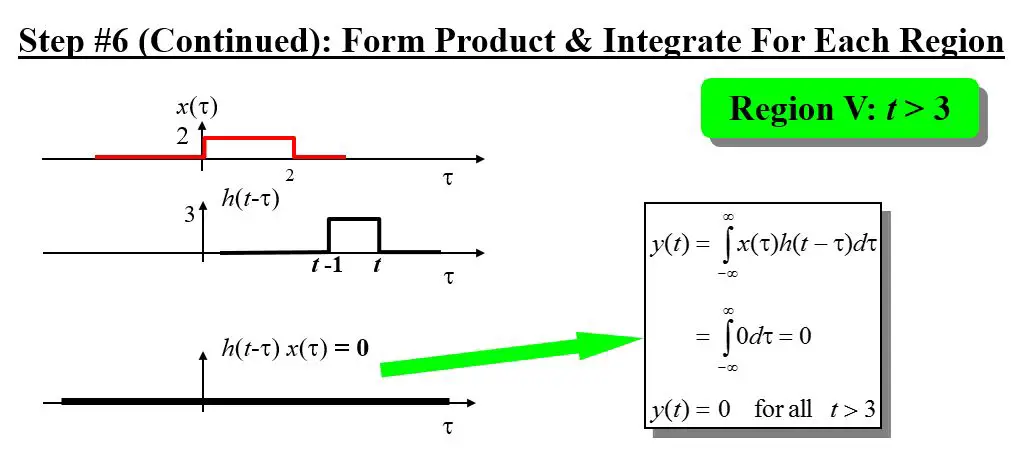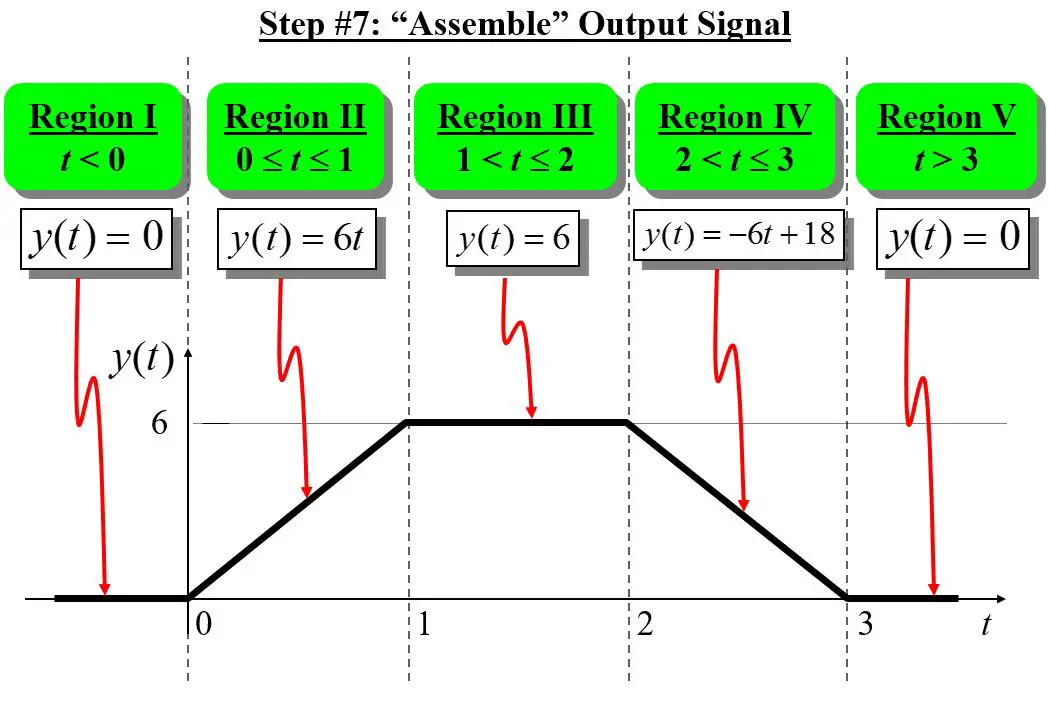This is the continuation of the PREVIOUS TUTORIAL.
Steps for Graphical Convolution
- First of all re-write the signals as functions of τ: x(τ) and h(τ)
- Flip one of the signals around t = 0 to get either x(-τ) or h(-τ)
- Best practice is to flip the signal with shorter interval
- We will flip h(τ) to get h(-τ) throughout the steps
- Determine Edges of the flipped signal
- Determine the left-hand edge τ-value of h(-τ): say τL,0
- Determine the right-hand edge τ-value of h(-τ): say τR,0
- Shifting h(-τ) by a random value of t to obtain h(t-τ) and get its edges
- Determine the left-hand edge τ-value of h(t-τ) as a function of t: say τL,t
Noteworthy: It will forever be…τL,t = t + τL,0
- Determine the right-hand edge τ-value of h(t-τ) as a function of t: say τR,t
Noteworthy: It will forever be…τR,t = t + τR,0
- Find out Regions of τ-Overlap
- Determine intervals of t over which the product x(τ) h(t-τ) possesses a single unique mathematical form in terms of τ
- For Each Particular Region: develop the Product x(τ) h(t-τ) and Integrate
- Develop the product x(τ) h(t-τ)
- Determine the boundaries of Integration by determining the interval of τ over which the mathematical product is nonzero
- Determine by discovering where the bounds of x(τ) and h(t-τ) lie down
- Call back that the bounds of h(t-τ) are τL,t and τR,t , which frequently depend upon the value of t
- Integrate the product x(τ) h(t-τ) over the boundaries determined in 6b
- “Put Together” the output from the output time-sections for each of the region important:
- DO NOT add together all the sections
- Specify the output in “piecewise” manner
This example is provided in collaboration with Prof. Mark L. Fowler, Binghamton University.
- You May Also Read: Continuous-Time Convolution Properties
